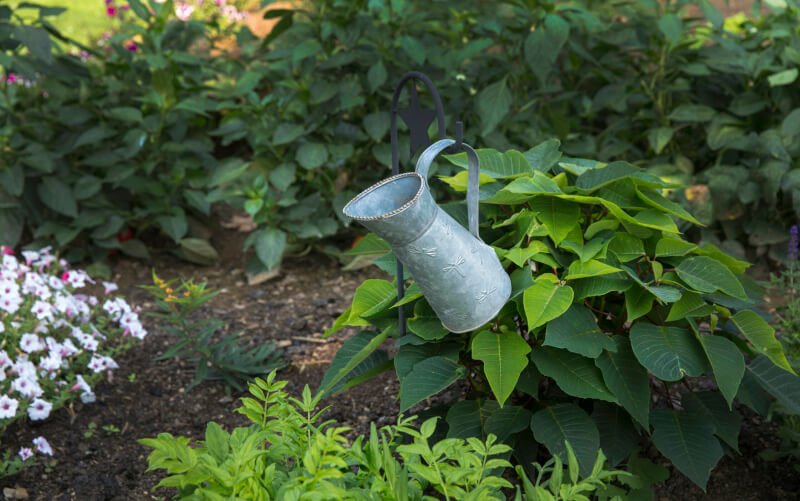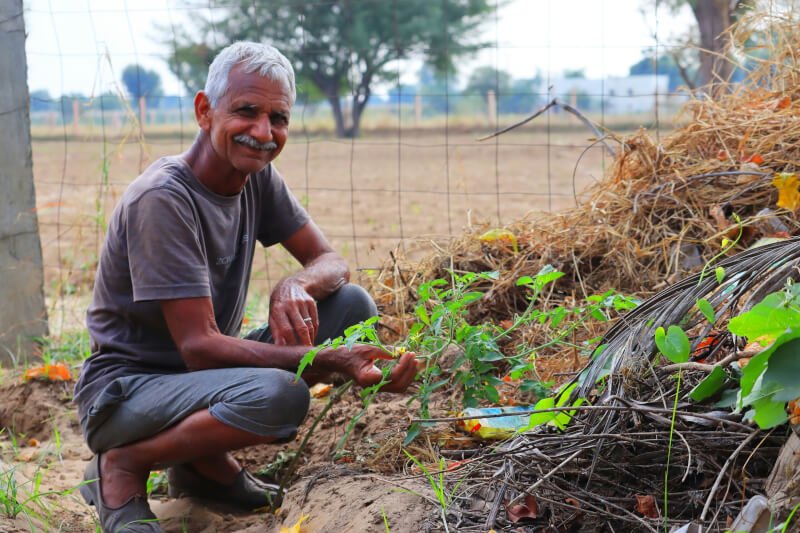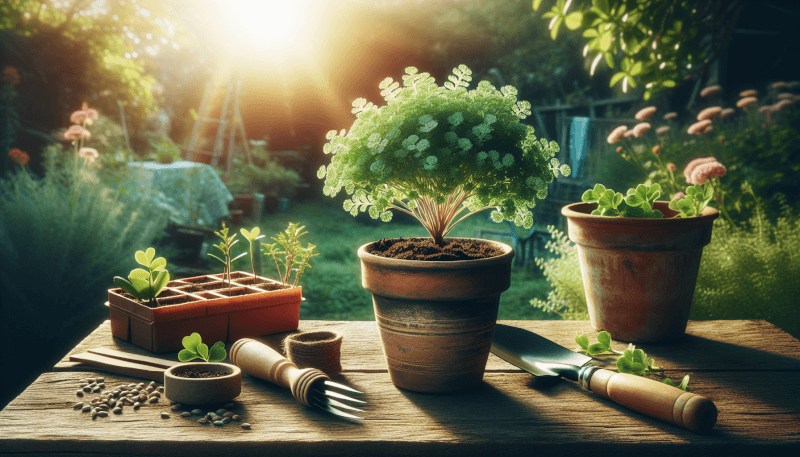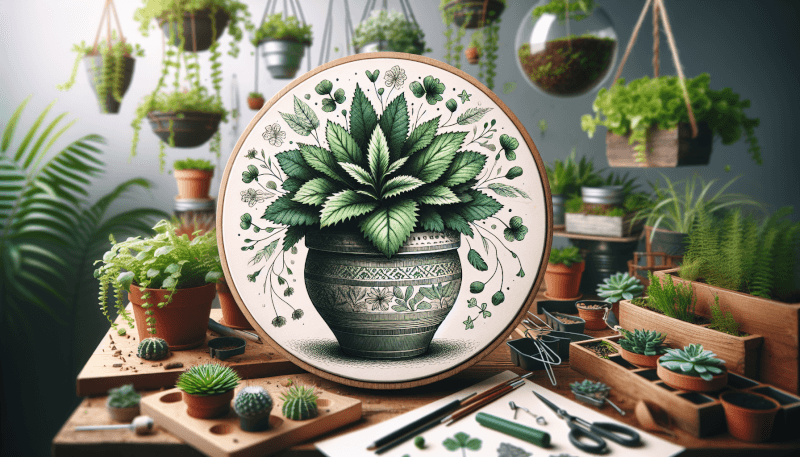Are you a beginner in gardening and looking for some fun and easy DIY projects to get started? Look no further! In this article, we have compiled a list of the top 10 DIY gardening projects that are perfect for beginners. From creating your own hanging planters to building raised garden beds, these projects will not only help you spruce up your outdoor space but also give you a sense of accomplishment as you nurture and watch your plants thrive. So grab your gardening tools and let’s get started on these exciting projects!

Building a Raised Garden Bed
Choosing the location
When it comes to building a raised garden bed, choosing the right location is crucial. You want to select an area in your yard that receives a minimum of six to eight hours of sunlight per day. This will ensure that your plants get the necessary sunlight to thrive. Additionally, consider factors such as accessibility, water source availability, and proximity to your home for convenience.
Gathering materials
To build a raised garden bed, you will need several materials. First and foremost, you’ll need wood boards or bricks to construct the frame of the bed. Pressure-treated lumber or cedar are excellent choices for longevity and resistance to rot. You’ll also need screws or nails to secure the frame, a level to ensure it’s even, and a measuring tape to determine the dimensions.
Constructing the frame
Once you have gathered all the necessary materials, it’s time to start constructing the frame of your raised garden bed. Begin by measuring and marking the desired dimensions of your bed. Next, cut the wood boards to the appropriate length using a saw. Assemble the frame by attaching the pieces together using screws or nails. Make sure the corners are square and the frame is level before proceeding.
Adding soil and compost
After the frame is built, it’s time to fill your raised garden bed with soil and compost. Start by removing any grass or weeds in the area where you’ll place the bed. Then, add a layer of cardboard or landscape fabric to prevent weed growth. Fill the bed with a mixture of quality garden soil and compost, ensuring it’s evenly spread. Finally, water the soil thoroughly to settle it in place.
Creating a Vertical Herb Garden
Selecting the appropriate herbs
When creating a vertical herb garden, it’s vital to choose herbs that thrive in vertical growing conditions. Some excellent choices include basil, thyme, rosemary, and mint. These herbs are known to grow well in containers or hanging baskets and are perfect for harvesting fresh leaves for culinary purposes.
Choosing a suitable container or structure
Selecting the right container or structure is essential for a successful vertical herb garden. Options range from simple hanging baskets and wall-mounted planters to repurposed wooden pallets or even PVC pipes. The key is to choose something sturdy, with proper drainage, and a size that accommodates the number of herbs you wish to grow.
Planting and arranging the herbs
Once you’ve chosen your herbs and container, it’s time to plant and arrange them. Start by filling your chosen container with a well-draining potting mix. Then, carefully transplant your herbs into the container, ensuring that each herb has enough space to grow and thrive. Consider arranging the herbs based on their height and growth habit to create an aesthetically pleasing display.
Providing proper support
Vertical gardens require proper support to ensure that the herbs grow upwards and don’t sag or bend. Depending on your chosen container or structure, you may need to use trellises, stakes, or hooks to provide support. It’s important to regularly check and adjust the support system as the herbs grow to maintain their upright position.

Making a DIY Terrarium
Gathering the necessary materials
To make a DIY terrarium, you will need several materials. These include a glass container with a lid, small pebbles or rocks for drainage, activated charcoal to prevent odors, potting soil suitable for the plants you’ll be using, and various plants that thrive in a terrarium environment. Additionally, you may choose to include decorative elements such as rocks, moss, or small figurines.
Selecting the plants
When selecting plants for your terrarium, it’s essential to choose those that thrive in a humid and enclosed environment. Some popular choices include ferns, mosses, air plants, and succulents. Consider the lighting conditions in the area where you’ll place the terrarium, as some plants may require more or less light.
Assembling the terrarium
Start by adding a layer of small pebbles or rocks at the bottom of the glass container. This layer will provide drainage and prevent water from accumulating at the roots of the plants. Next, sprinkle a thin layer of activated charcoal on top of the rocks to keep the terrarium odor-free. Then, add a layer of potting soil, taking care to create different heights and slopes to add visual interest.
Next, begin planting your chosen plants, taking into account their size and growth habit. Dig small holes in the soil, gently place the plants, and lightly pat the soil around them to anchor them in place. Finally, add any decorative elements such as rocks or moss, and carefully water the terrarium without over-saturating the soil.
Caring for the terrarium
Terrariums require minimal care and maintenance but still need some attention to thrive. Place your terrarium in an area that receives bright, indirect light, avoiding direct sunlight that could cause the glass to overheat. Water the terrarium sparingly, checking the moisture level in the soil before watering again. If condensation builds up on the glass, leave the lid off for a while to allow some airflow. Trim any dead or overgrown foliage to keep the terrarium looking tidy.
Designing a Flower Bed
Planning the layout and theme
Designing a flower bed involves careful planning to create an aesthetically pleasing and cohesive look. Start by determining the size and shape of your flower bed, considering factors such as the available space and the surrounding landscape. Choose a theme or color scheme that you wish to follow, such as a cottage garden, a native wildflower meadow, or a modern monochromatic bed.
Preparing the soil
To ensure that your flowers thrive, it’s important to prepare the soil properly. Begin by removing any grass, weeds, or debris from the area where the flower bed will be. Loosen the soil using a garden fork or tiller, breaking up any clumps and removing rocks or roots. Amend the soil with organic matter, such as compost or well-rotted manure, to improve its structure and fertility.
Selecting and planting the flowers
Once the soil is prepared, it’s time to select the flowers that will adorn your flower bed. Consider factors such as the amount of sunlight the area receives, the soil type, and the blooming periods of various flowers. Choose a combination of perennial and annual flowers to ensure color and beauty throughout the year. Dig individual holes for each plant, taking care not to damage the roots, and place the flowers at the appropriate depth, firming the soil around them.
Adding mulch and fertilizer
To help retain moisture, suppress weed growth, and add nutrients to the soil, it’s beneficial to apply mulch to your flower bed. Organic mulch, such as wood chips or shredded bark, not only improves the appearance of the bed but also provides a favorable environment for beneficial organisms. Additionally, consider fertilizing your flowers with a slow-release fertilizer to promote healthy growth and vibrant blooms.

Building a Trellis for Climbing Plants
Choosing the type of trellis
When building a trellis for climbing plants, it’s crucial to choose a type that suits the specific needs of the plants you intend to grow. Some common options include arched trellises, lattices, or obelisks. Consider the growth habit and the weight of the plants when selecting the trellis material, opting for sturdy materials such as wood or metal that can withstand the weight of the plants.
Installing the trellis
Depending on the trellis design and the location, installing a trellis can vary. Many trellises are designed to be freestanding, allowing you to place them wherever needed in your garden. Others may require anchoring to a wall, fence, or the ground. Ensure that the trellis is securely installed, providing stability for the climbing plants as they grow.
Training the climbing plants
Climbing plants need assistance and guidance to grow properly on the trellis. As the plants start to grow, gently train their stems to wrap around the trellis or weave them through the openings. Use soft ties or garden twine to secure the plants to the trellis, being careful not to damage the stems. Regularly monitor the growth of the plants and adjust their position on the trellis as necessary.
Maintaining and supporting the plants
Regular maintenance and support are crucial for the healthy growth of climbing plants. Monitor the plants for any signs of pests or diseases and take appropriate action if necessary. Provide adequate water and nutrients as per the specific needs of the plants. Additionally, consider periodically pruning the plants to control their growth and encourage branching, which can lead to a fuller and more lush appearance.
Constructing a DIY Compost Bin
Selecting the right location
When constructing a DIY compost bin, it’s essential to choose the right location for optimal composting conditions. Select a spot in your yard that is easily accessible and receives partial shade, as excessive sunlight can dry out the compost. Ensure the area has good drainage to prevent water accumulation, and consider proximity to a water source for convenience.
Gathering the materials
To construct a DIY compost bin, you’ll need several materials. These include wood or pallets for the sides of the bin, screws or nails to secure the structure, wire mesh or hardware cloth for aeration, and a shovel or pitchfork for turning the compost. Optional materials may include hinges for a removable front panel or a tarp to cover the compost during heavy rain.
Building the compost bin
Start by determining the size and shape of your compost bin and cut the wood or pallets accordingly. Assemble the sides of the bin by securing the boards together using screws or nails. Ensure the structure is sturdy and square. Next, attach the wire mesh or hardware cloth to one side of the bin to provide aeration. If desired, attach hinges to one side to create a removable front panel for easy access to the compost.
Maintaining the compost pile
To maintain a healthy compost pile, it’s important to provide the right conditions and regularly tend to it. Maintain a balanced ratio of green and brown organic materials, such as kitchen scraps, grass clippings, leaves, and sawdust. Turn the compost using a shovel or pitchfork every few weeks to aerate it and promote faster decomposition. Keep the compost moist, but not too wet, and monitor the internal temperature to ensure it reaches optimal levels for decomposition.

Creating a Succulent Arrangement
Choosing the right succulents
When creating a succulent arrangement, selecting the right succulents is crucial. Consider factors such as their growth habits, colors, and textures to create an aesthetically pleasing display. Choose succulents that have similar care requirements and are suited to the lighting conditions in the area where the arrangement will be placed. Popular succulent choices include echeveria, sedum, crassula, and haworthia.
Selecting a suitable container
Choose a container that complements the size and style of your succulents. Ensure that the container has proper drainage to prevent waterlogging, as succulents are prone to root rot. It can be fun to get creative with container choices, such as using a vintage teacup, a shallow dish, or even a repurposed wooden box. Just remember to use a saucer or tray to catch any excess water.
Arranging the succulents
When arranging your succulents, consider the overall design and balance of the arrangement. Begin by filling the container with well-draining potting soil, leaving enough space for the succulents to be placed. Start with a focal point succulent and build around it, varying the colors, sizes, and textures to create visual interest. Gently remove each succulent from its original container, loosen the roots, and position it in the new arrangement. Make sure to leave enough space between each plant to allow for growth.
Caring for the arrangement
Succulents are known for their low maintenance requirements, making them an excellent choice for beginners. Place your succulent arrangement in an area that receives bright, indirect light, avoiding intense afternoon sun. Water the succulents sparingly, allowing the soil to dry out between waterings. Be cautious of overwatering, as this can lead to root rot. Additionally, remove any dead or dying foliage to keep the arrangement looking fresh and vibrant.
Making a DIY Birdhouse
Gathering the necessary materials
To make a DIY birdhouse, you’ll need a few basic materials. These include wood boards or plywood for the structure, screws or nails to secure the pieces together, and a saw to cut the desired shapes. You’ll also need a drill with different-sized drill bits to create the entrance hole and ventilation holes. Consider additional materials such as sandpaper, paint, and a wood sealant for added protection and decoration.
Choosing the design and size
Birdhouses come in various designs and sizes, each catering to different bird species. Research the specific bird species you wish to attract to determine the appropriate house design and size. Consider factors such as the entrance hole diameter, floor space, and nesting requirements of the targeted birds. Look for birdhouse plans or templates online to guide you in creating the perfect design.
Constructing the birdhouse
Start by cutting the wood boards or plywood according to the measurements and design of your chosen birdhouse. It’s important to create a sturdy structure that can withstand outdoor elements. Assemble the pieces using screws or nails, ensuring the joints are secure. Create the entrance hole using the appropriate-sized drill bit, and add ventilation holes to prevent heat buildup. Sand the edges and surfaces of the birdhouse and apply a wood sealant if desired. Painting the birdhouse with non-toxic exterior paint can add personality and help protect it from weathering.
Placing and maintaining the birdhouse
The placement of the birdhouse plays a crucial role in attracting bird residents. Mount the birdhouse on a pole or hang it securely in a suitable location, ensuring it’s at the appropriate height and away from predators. Orient the entrance away from prevailing winds for the birds’ comfort. Regularly clean and inspect the birdhouse, typically in the fall, to remove any debris or unwanted pests. Providing fresh nesting materials nearby, such as small twigs or feathers, can also entice birds to choose your birdhouse as their home.

Building a Garden Pathway
Selecting the path materials
When building a garden pathway, selecting suitable materials is essential for durability and aesthetics. Several options exist, including gravel, flagstone, brick, or concrete. Consider the style and overall theme of your garden, as well as the desired level of formality. Gravel can create a casual and natural-looking path, while flagstone or brick can lend a more elegant and structured appearance.
Planning and marking the pathway
Before beginning construction, carefully plan the layout and direction of your garden pathway. Consider the natural flow and focal points of your garden, as well as the practicality and functionality of the path. Once you’ve determined the path’s alignment, use stakes or string to mark its boundaries and make any necessary adjustments.
Preparing the ground
Prepare the ground beneath your pathway to ensure a stable foundation. Start by removing any grass, weeds, or plants that may interfere with the path’s installation. Level the ground by removing excess soil or adding additional soil as needed. Add a layer of landscape fabric to help suppress weed growth and prevent the base materials from mixing with the soil. Finally, compact the soil to create a solid base for your pathway.
Installing the pathway
Depending on the selected material, the process of installing the pathway can vary. Gravel paths require spreading a layer of gravel evenly over the prepared base and compacting it with a tamper. Flagstone or brick paths involve placing individual stones or bricks directly onto a bed of sand or mortar and securing them in place. Concrete paths typically require pouring and leveling concrete into prepared forms or molds. Ensure that the path is level and adequately secured, and allow for proper curing or drying time before using it.
Making a DIY Planter Box
Choosing the right wood
When making a DIY planter box, selecting the right wood is crucial for long-term durability. Opt for rot-resistant wood species, such as cedar or redwood, to ensure that your planter box can withstand outdoor elements. These woods are naturally resistant to decay and insect damage, making them an excellent choice for extended use.
Measuring and cutting the pieces
Start by determining the desired size and shape of your planter box. Measure and mark the dimensions on the selected wood, ensuring accuracy for a proper fit. Use a saw to cut the wood pieces according to your measurements, taking into account the depth, width, and height of the planter box. Pay attention to the precision of the cuts to ensure that the pieces align correctly during assembly.
Assembling the planter box
Once you have cut the wood pieces, it’s time to assemble your planter box. Begin by attaching the sides of the box to the front and back using screws or nails. Ensure the corners are square and the pieces fit snugly together. Next, attach the bottom of the planter box, securing it to the sides at regular intervals. Consider pre-drilling holes in the wood to prevent splitting. Finally, check the stability and reinforce any weak joints with additional screws or nails.
Adding drainage and soil
To ensure proper drainage for your plants, you’ll need to add drainage holes to the bottom of your planter box. Use a drill and a suitable-sized drill bit to create several holes evenly spaced across the bottom. Next, add a layer of coarse gravel or small rocks to the bottom of the planter box to facilitate drainage. Finally, fill the box with a suitable potting mix, choosing one that is appropriate for the specific plants you intend to grow. Ensure the soil is evenly spread and gently pat it down around the edges.
Gardening is a fulfilling and rewarding hobby that not only beautifies your surroundings but also provides numerous benefits. These top 10 DIY gardening projects for beginners are a great way to start your gardening journey. Whether you choose to build raised garden beds, create vertical herb gardens, or construct compost bins, these projects will provide you with hands-on experience and opportunities to unleash your creativity.
Remember to choose the right location for your projects, gather the necessary materials, and follow the step-by-step instructions for each project. From selecting suitable plants and arranging them in terrariums to choosing the perfect design for a birdhouse or creating pathways in your garden, there is something to suit every gardener’s taste and preference.
As you embark on these DIY gardening projects, don’t forget to enjoy the process. Gardening is a journey of discovery and learning, and mistakes can often lead to valuable lessons. Embrace the opportunity to connect with nature, experiment with different plants and materials, and watch as your garden projects flourish. With a little time, effort, and enthusiasm, you’ll find yourself reaping the rewards of your hard work as your garden thrives and brings you joy. Happy gardening!


